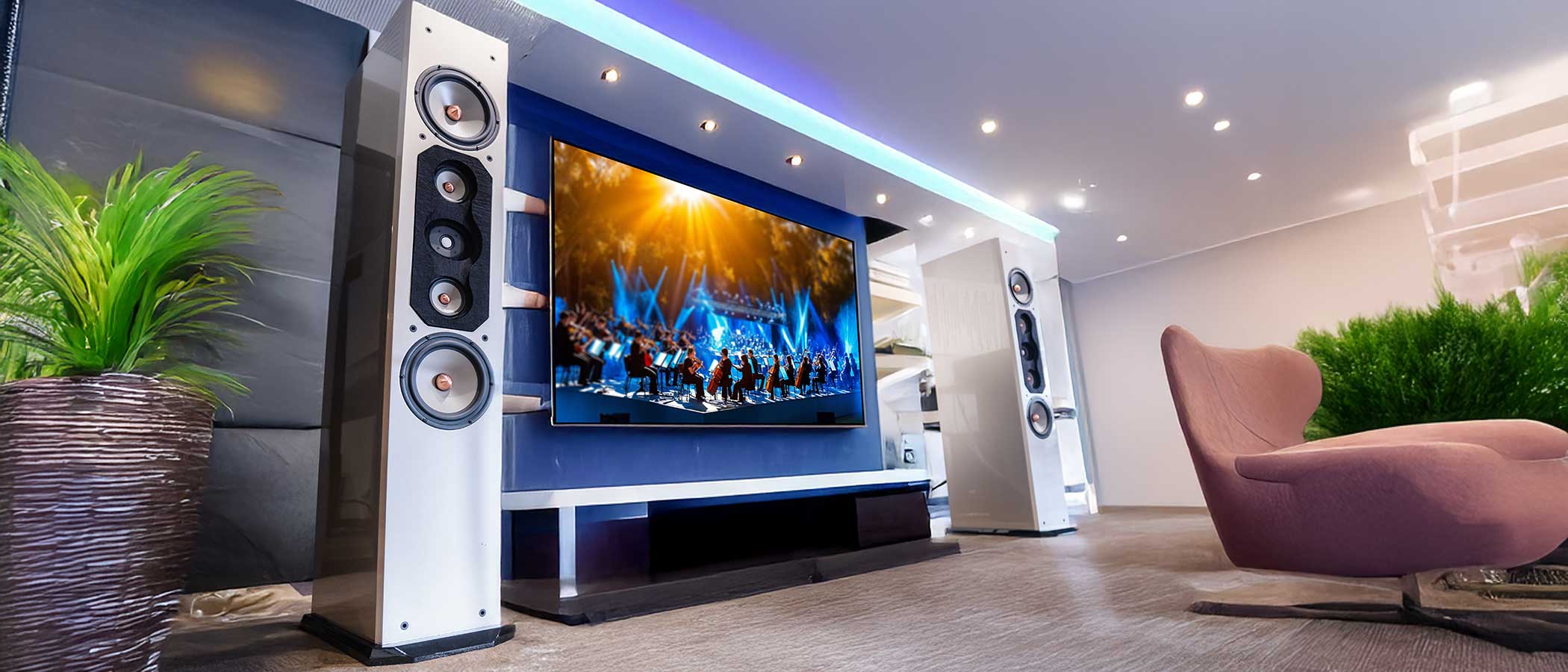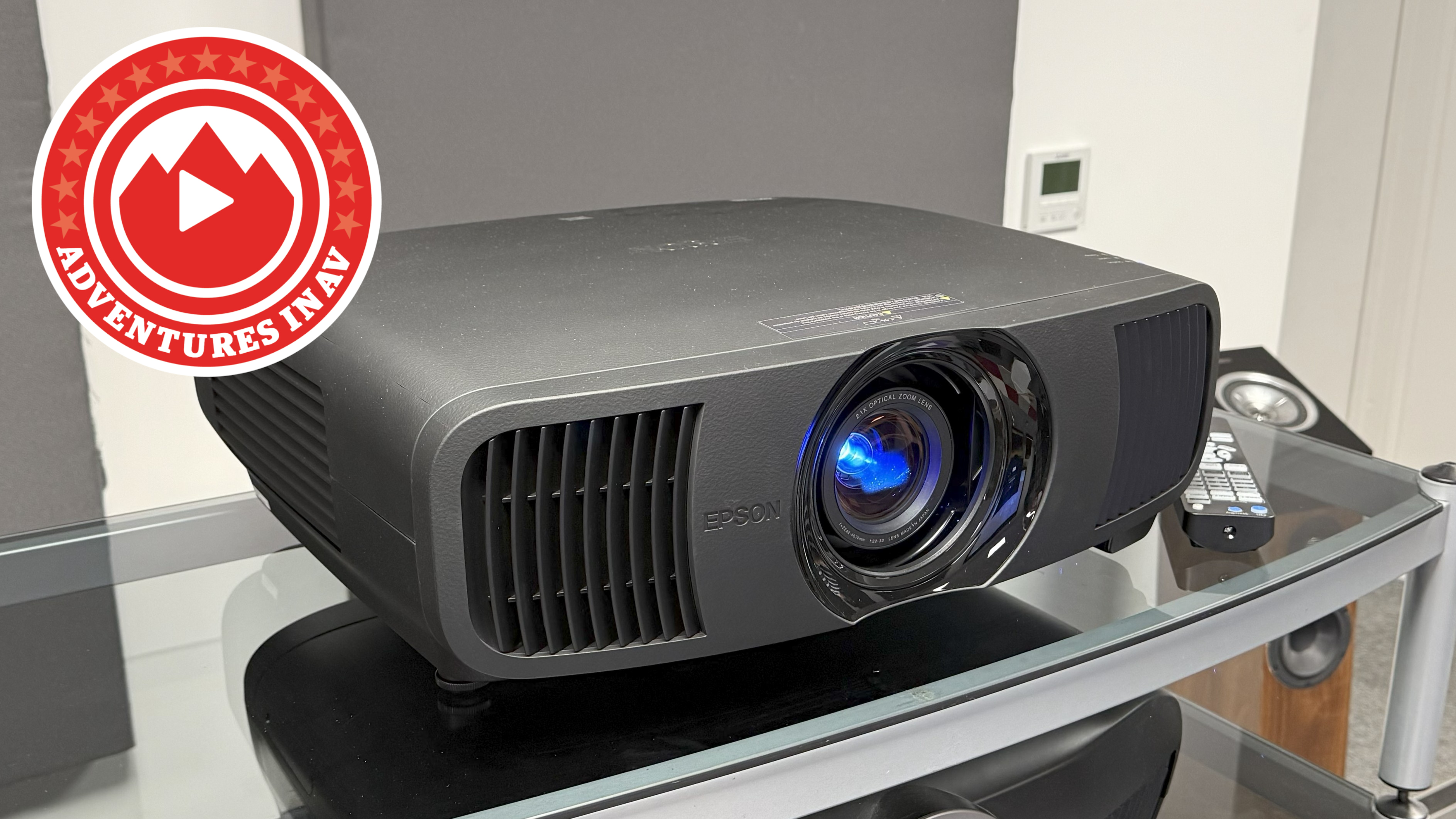What Hi-Fi? Verdict
The revamped i93 loudspeakers achieve what the designer set out to accomplish, faithfully reproducing recordings with utmost accuracy, devoid of coloration, within a deep and wide soundstage that nails stereo imaging.
Pros
- +
Wonderfully revealing and articulate
- +
Tight and deep bass
- +
Prestige aura!
Cons
- -
Bass-reflex port could be further optimised
Why you can trust What Hi-Fi?
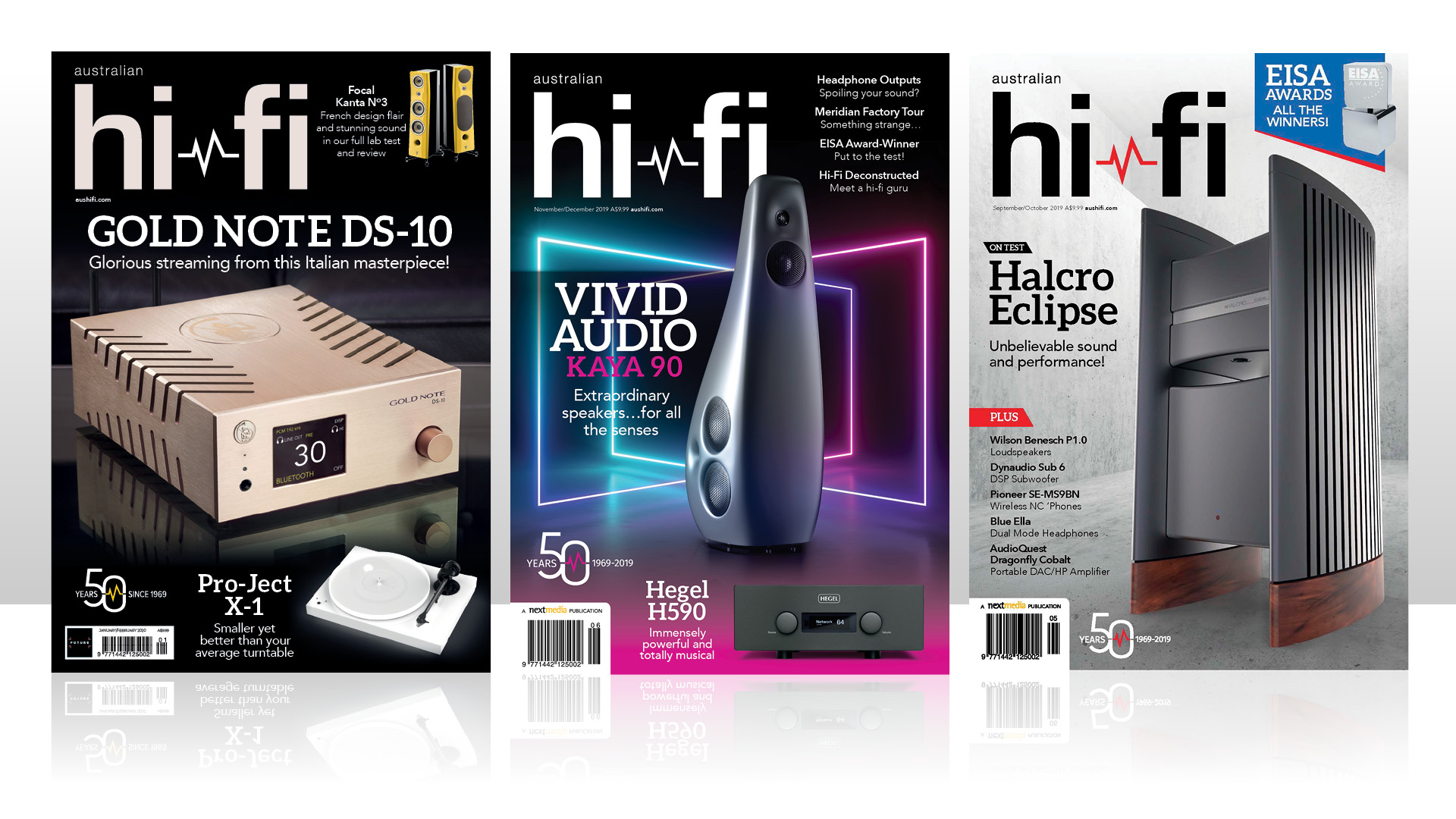
This review and test originally appeared in Australian Hi-Fi magazine, one of What Hi-Fi?’s sister titles from Down Under. Click here for more information about Australian Hi-Fi, including links to buy individual digital editions and details on how best to subscribe. Read What Hi-Fi?'s global, star-rated Roksan Atessa Streaming Amplifier review.
You’re greeted with a visual testament to the designer’s meticulous effort and investment before even removing the grilles from these high-end loudspeakers. The array of physical features isn’t just for show; they represent sophisticated engineering aimed at achieving unparalleled fidelity.
For those less acquainted with the intricacies of multi-way speaker design, it is essential to understand the challenges and objectives involved. The goal is to create a multi-source audio reproduction system that harmonises tonal quality, timing, accuracy, imagery, resolution and the listening environment. Whether or not you’re familiar with technical terms like ‘linear phase’, ‘phase distortion’, ‘power response’, ‘transient reproduction’ or ‘Hilbert transform’, it’s crucial to recognise the dedication of experts such as Nick Ataliotis and his peers, who have devoted their lives to perfecting these qualities and bringing their benefits to real-world products.
VAF’s design manifesto for its Signature i93 MKV, the price for which starts at AU$21,900, was to honour and respect the artists and engineers who create music, and to faithfully reproduce their recordings with pure, true-to-life accuracy – no artefacts, no colouration. The priority was to make a full-spectrum loudspeaker with wide, deep soundstaging and three-dimensional, pin-point stereo imaging.
To deliver a performance of this high calibre, multiple drivers are typically necessary, each expertly crafted to handle specific parts of the audio frequency spectrum. Here, the engineering challenge lies firstly in balancing the physical limitations of the drivers, crossovers, cabinets and the environment in which they sit, and then in ensuring that the combined output from the drivers reaches your ears with the precision required to optimally reconstruct the recording.
As you may well know or have guessed, this is no trivial challenge. Consider the experience of listening to several sounds in a room filled with conversations or at a live music performance. Your position in the room or relative to the stage significantly alters what you perceive as sound, as does the room’s acoustic properties. When multiple sound sources are involved, especially in a reflective environment, your position introduces a host of complexities that ultimately shape your perception.
In large loudspeakers such as the VAF i93, which aim to produce high quality and levels of sound, the use of many drivers – in this case, ten – demands an extraordinary level of attention to detail, not to mention effort. The primary design principles of such a loudspeaker hinges on accuracy and resolution across the entire audio band. This is not just about hearing music but about experiencing it, in its purest form, with every nuance and detail preserved.
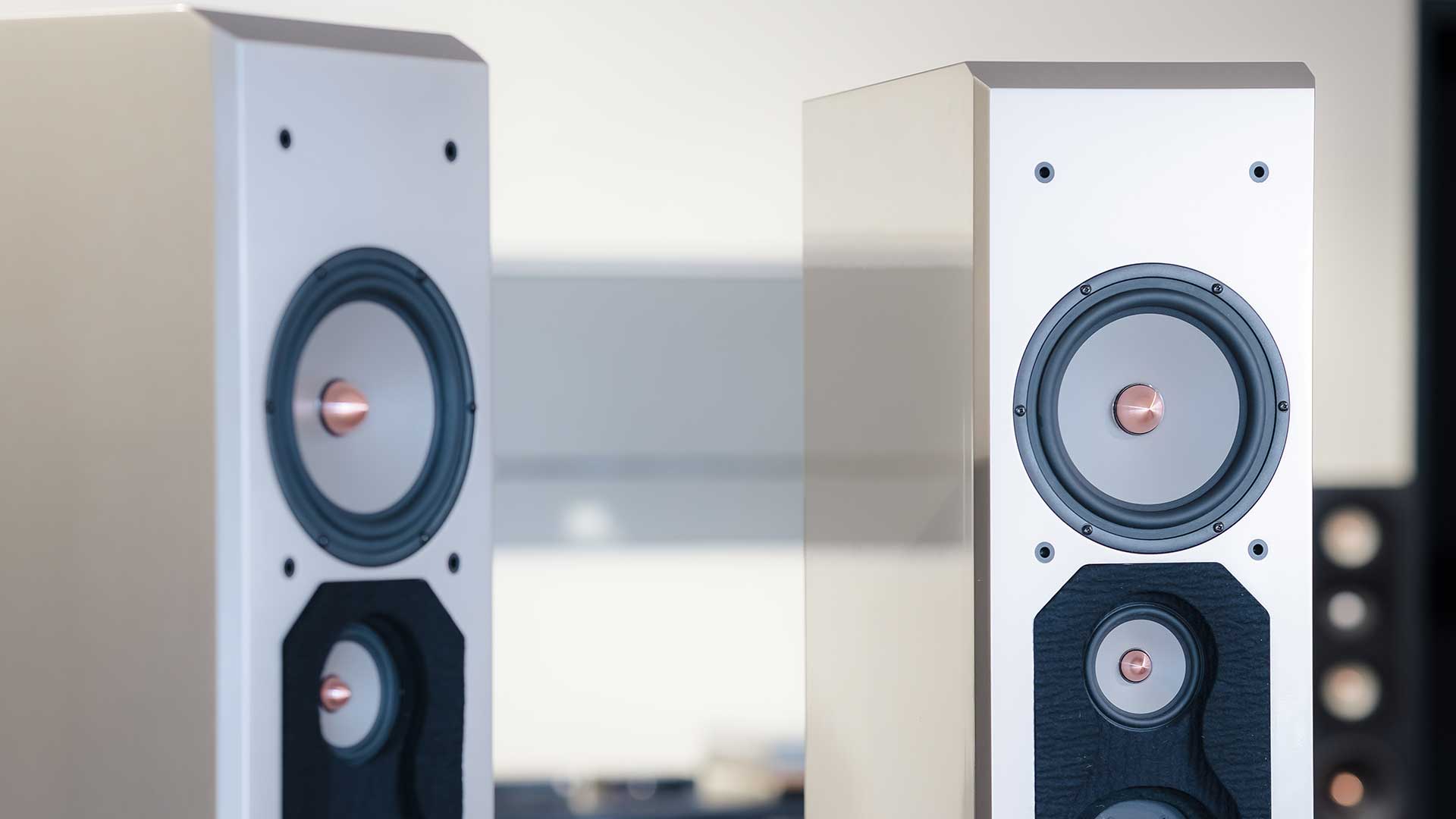
In essence, the art and science of high-fidelity speaker design is a symphony of precision, where engineering meets artistry to create an auditory experience that transcends mere sound reproduction. It’s a journey into the heart of music, where every note, every beat and every breath is delivered with extraordinary clarity. Like many other fields of endeavour, be it a vintner, supercar manufacturer or watchmaker, it boils down to priorities, optimisations and, indeed, trade-offs.
The latest hi-fi, home cinema and tech news, reviews, buying advice and deals, direct to your inbox.
Such stringent criteria make it important to understand that a loudspeaker with this level of technical priority may not always be music material-friendly. These VAFs, in particular, tend to favour certain content over others when evaluated in terms of familiarity, overall preference, ease of listening or forgiveness. Some material may present itself unexpectedly; your favourite pop music, for example, might sound surprisingly different – perhaps more akin to a live performance. Other material could sound delightfully renewed and articulated and in line with your expectations.
This loudspeaker isn’t designed to necessarily sound appealing with all music; its philosophy revolves around resolving everything, no matter how subtle, within the signal it is handed from the connected system electronics. To this end, the i93 MKV demand very good accompanying equipment and a powerful amplifier. They will reveal where minor changes to your setup are contributing subtle audible differences.
Design
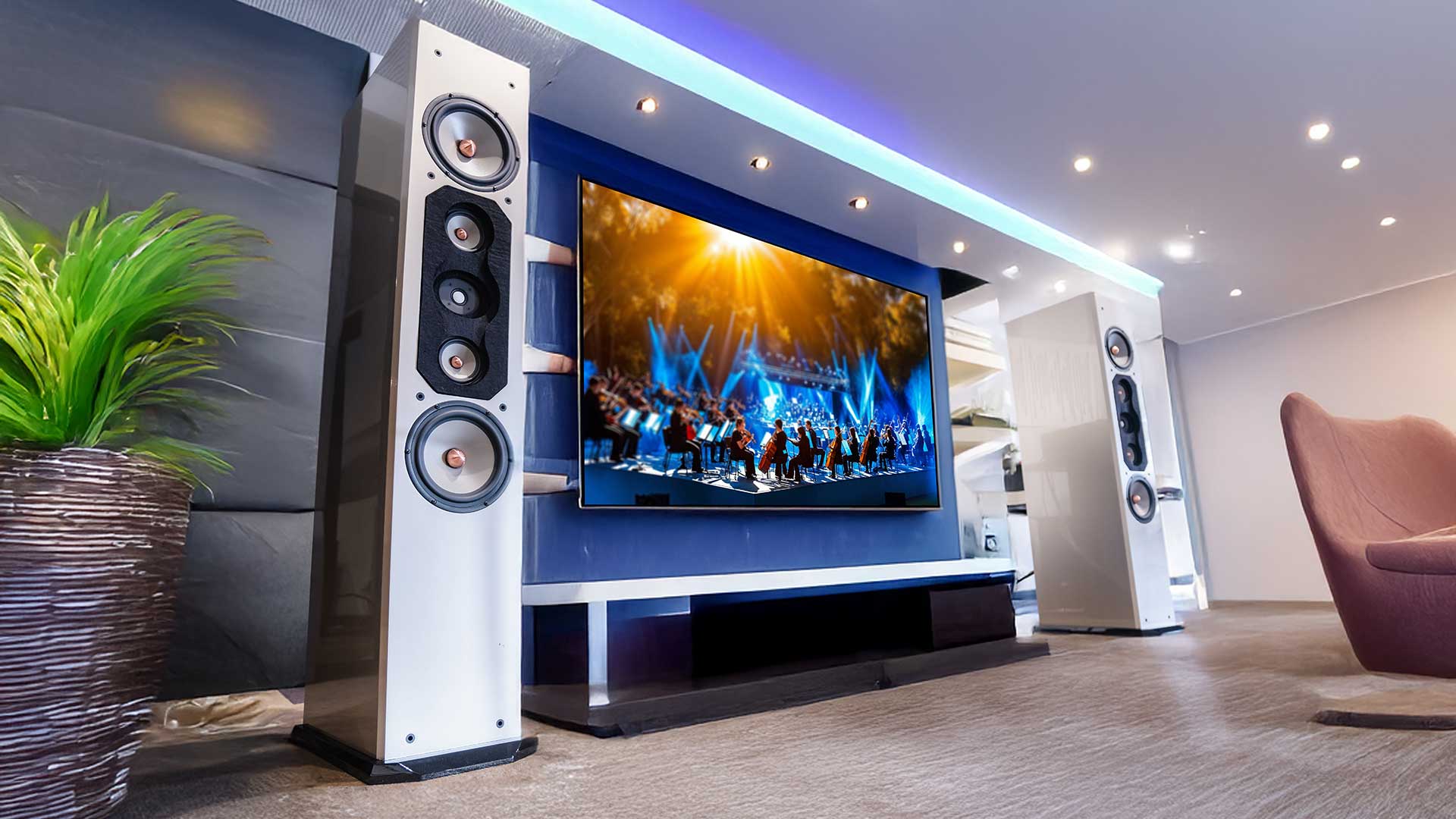
Drivers: 25mm double-chamber magnesium-alloy dome tweeter, 2 x 130mm magnesium-alloy cone midrange drivers, 2 x 220mm magnesium-alloy cone woofers
Quoted frequency range: 17Hz ~ 22kHz
Quoted frequency response: 21Hz ~ 19kHz (±2dB)
Impedance: 6 ohms (nominal)
Sensitivity: 89 dB @ 1W/1m
Dimensions (HWD): 151 x 57 x 31cm
Weight: 98kg
So how does VAF’s design brief translate to tangible features? One standout element is the attention its engineers have paid to horizontally offsetting the drivers. This is an attempt to localise their acoustic source points onto a specific manifold so that at the listening sweet spot there is minimal difference between the signal’s time of flight from where it’s generated to where it’s recombined and perceived at the ear.
Driver time alignment is one of the many necessary considerations to achieve minimal phase disruption, which in the ideal case facilitates a linear phase response, where no part of the audio spectrum is delayed differently from any other part. The technical relevance is that the more linear a system’s phase response, the more precisely waveforms (particularly those containing sharp edges) can be reconstructed with the exact same shape when viewed in the time axis.
The compromise is that while staggering the drivers is relatively easy, as is the use of symmetrical driver arrays, designing practical crossovers to ensure phase linearity is not. You see, such crossovers require very shallow degrees of roll-off and demand that drivers also perform exceptionally well in regions outside their typical band range, which very few can pull off without issue. Also, the designer may have to sacrifice tonal optimisation or the addition of other networks that address imperfect driver characteristics in order to prevent crossover phase disruption.
How relevant is perfect phase performance? Well, it is no doubt an admirable goal and hats off to any manufacturer that incorporates features designed to improve a loudspeaker in this regard. However, as with many things in life, balance is most definitely required. Attributing too much importance to this will risk compromising many other performance parameters, considered by most to be more important.
The topic is extremely interesting and you may be familiar with historical work done by Floyd Toole (Canada’s National Research Council), in the summary of research into loudspeaker performance at the NRC. Their work suggested that, while technically appealing, prioritising accurate waveform reproduction through accurate phase and flat amplitude response offers, in practice, very little when scored by listener sensitivity. It further suggested that amplitude response and tonality are clearly more relevant parameters in terms of listener experience, as are power handling, distortion, driver breakup region, and off-axis response.
Having built linear phase loudspeakers myself, I couldn’t resist the temptation of comparing the i93 MKV’s ability to reconstruct a 500Hz square wave at the 2.5m sweet spot compared to another high-quality, symmetric mid/bass loudspeaker for which there was no attention to time alignment. Under the same measurement conditions, the latter produced an oscilloscope waveform resembling something closer to a distorted triangular waveform, probably due to the time of flight difference between the 500Hz fundamental and the first odd harmonic at 1500Hz. Meanwhile, the i93 MKV did a much better job: while the waveform was far from a perfect square wave, it did have some flattish parts to the waveform’s tops and bottoms and more sharpness to the rise and fall edges. This is by no means a definitive test, of course, and the measurement did include some room reflective components, but nevertheless I found the result pleasing, convincing and, yes, in the VAF speakers’ favour.
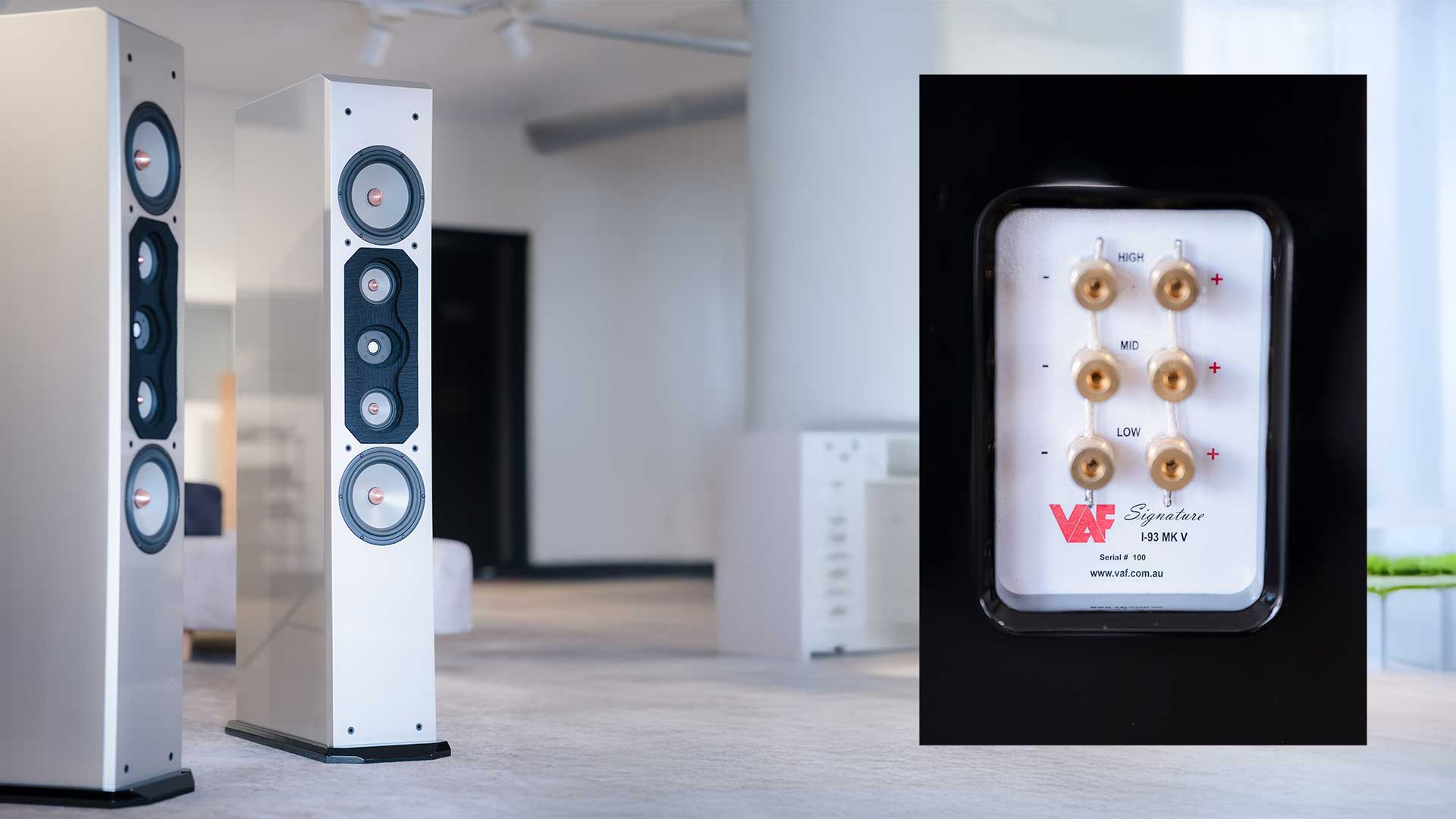
Drivers & crossovers
The i93 MKV employs full three-way crossovers, with large hand-wound air core inductors and SCR capacitors in the critical signal paths, and all components are directly connected without requiring circuit boards.
A major change for this generation of i93 is the SEAS woofers’ upgrade to magnesium alloy. Indeed, it marks the mode’s first driver change since 2009. This new material has been adopted to ensure the woofers match the other drivers both tonally and visually. The tweeter is a custom SEAS OEM magnesium alloy unit.
Employing all-magnesium drivers presents challenges, particularly with inherent breakup spikes outside of their passband. Pure first-order crossovers were avoided for some of the reasons I’ve already discussed. The primary goal was to harness the benefits of magnesium drivers, such as fine resolution, clarity and detail, while avoiding the fatigue often associated with metal-only drivers. VAF says that achieving this required approximately 30 iterations of crossover design, measurements and tweaks, along with hundreds of hours of listening over nine months.
The new woofer had to be repositioned 15mm forward to achieve proper time alignment with the midrange drivers and tweeter.
Cabinets
We were quietly fascinated by the wife’s reaction (affectionately known as the “wife factor”) to my review samples during their three-week visit. Given the sheer physical presence of the i93 MKV and the limited size of my listening room, I expected some kind of assertion that speakers of such proportions would not be desirable in our own living room. But hey, I never got it – perhaps due to their absolutely gorgeous colour choice and finish.
The paint quality is quite superb, the metallic silver undeniably stunning and flattering. In my room where some dark timber is present, the speakers adopted a pewter hue which allowed even cabinets this large to simply blend into the space. As the days went by, I was delighted by the air of excitement they brought to it. They gave off a Bentley-prestige vibe.
At high volume levels, the cabinet appeared to be highly inert with no perceived panel vibrations. Unfortunately, the loudspeakers were not supplied to me in customer-ready form, so I was without accessories, a manual and spikes. The base of the cabinet appeared to have holes to later accommodate a custom spike or foot.
At the rear, the large connectors allowing for separate three-channel wiring to the amplifier are presented on a black gloss panel. This is also where you’ll find the bass-reflex port.
The port was so clearly finessed in many areas that I was somewhat surprised it was less optimised than it perhaps could have been. The single 10cm-diameter vent serves both 17cm-diameter bass cones and is therefore responsible for channeling air at considerable velocity below 40Hz. The cabinet/vent system is tuned at about 25Hz, and at this peak flow frequency there is a perceivable degree of vent chuffing running at a power level of several watts, which I noticed when standing next to the speaker. Closer inspection revealed that the vent’s inner edge is quite sharp and devoid of any obvious attempt to minimise vent-induced turbulent noise through edge contouring or extension flare. While this audible artefact may not be obvious during normal use, I believe it could (and should) be improved given the aspirational engineering goal and the effort that has been extended to every other sonic design element.
The black felt layers surrounding the tweeter and midrange drivers are acoustically functional and reduce unwanted baffle reflection and diffraction, even if I believe they could be slightly aesthetically improved. The two thin sheets on top of one another are able to move and warp a little, allowing the felt edge to protrude ever so slightly above the baffle surface, so it would be nice if it had either a very low profile or some contoured-edged frame.
VAF states that the cabinets are constructed by a local, third-generation cabinet/furniture maker in the Adelaide Hills. They use MDF up to 54mm thick and extensive cross bracing throughout. Standard finishes are genuine timber veneers such as Black American Oak, Tasmanian Blackwood, Australian Jarrah, Feature Eucalypt and American Walnut, with a satin black front baffle, backplate and base. Painted/gloss finishes are available on request, too.
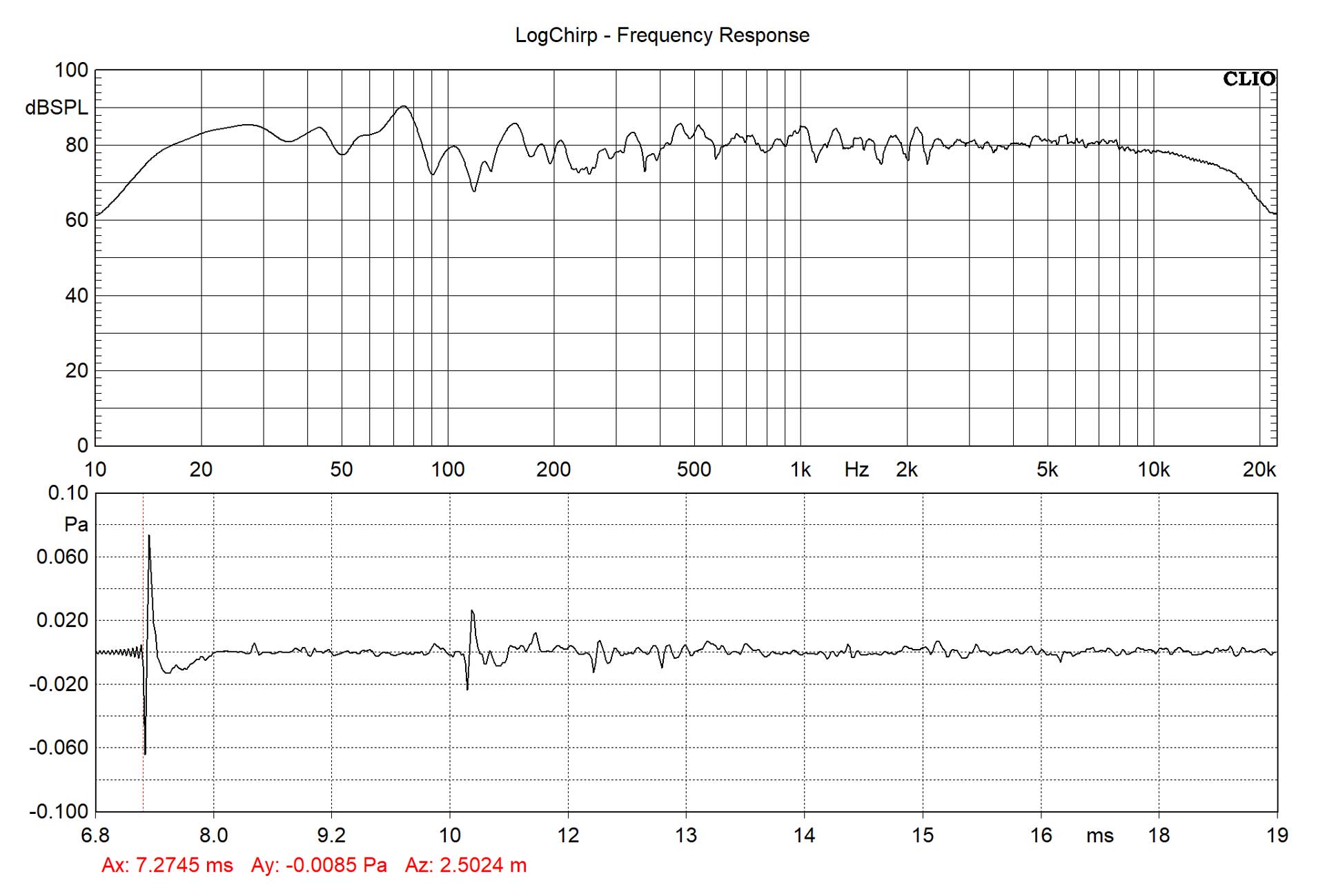
Measurements
I first measured the Signature i93 MKV’s on-axis frequency response and tonality (above). The measurement was taken at 2.5m, close to the optimal time-aligned position, centered and diagonal to the major axis of a listening room measuring roughly 8m x 3.5m. The frequency response was not smoothed and the plot, whilst showing the reconstructed pulse response, was not time window gate-restricted. The mean level appears to be 80dB, but correcting the distance to one metre and powering them with a 2V RMS signal sets the sensitivity to ~87dB/W/M (per watt, per metre).
Several things jumped out immediately. Firstly, the frequency response is, as you can see, flat – very flat – particularly in the midrange and crossover regions, in accord with VAF’s desire for accuracy.
Also, the bottom end extends well below human hearing limits with a well-damped roll-off resulting in accurate bass transient reproduction. A lot of bass could be experienced and felt, not just heard.
The top end rolls off a little earlier than many loudspeakers, at about 16kHz, but perhaps due to other attributes of the magnesium tweeter, such as its power response, I did not find this diminished the sparkle of the top end. The bottom graph demonstrates some of the i93 MKV’s waveform reproducing power, showing a sharp impulse with just a little, but well-damped, overshoot decaying completely in about 0.5ms. The 16kHz roll-off was intentionally introduced in order to get the best out of these tweeters and reduce the high-frequency breakup associated with all metal domes. This was a significant area of optimisation requiring a great deal of listening and tweaking, according to the VAF designer.
I found I never tired of the tweeter, yet it could deliver an astonishing brilliance where required and, on some cymbals, a unique sense of a live performance brassy ‘zing’. The midrange sounded revealing and natural, too, with vocals coming through slightly forward of center in a highly precise and articulate soundstage.
While I didn’t take off-axis measurements, I did spend some time moving my listening position in the vertical axis. It can be challenging for a large, multi-driver loudspeaker to maintain tonal precision in the vertical axis, however keeping my ears between the level of the two midranges – about a 40cm window – gave the impression of very stable tonal reproduction.
While I have great respect for the pursuit of accuracy, I do feel there is some room for manoeuvering when it comes to tonality. For these speakers to wholly satisfy my personal preference, I would very much like to hear them with approx 1-2dB more energy between 80Hz and 400Hz to give the lower midrange a bit more of an inviting and emotional quality. Slightly greater energy in this region would, I believe, allow the i93 MKV to retain their claim of accuracy and somewhat improve their reproduction of natural male vocals (such as Gregory Porter’s and Leonard Cohen’s) which, to my ear, in my room and on my equipment, sounded a tad cooler and less engaging than I would’ve preferred.
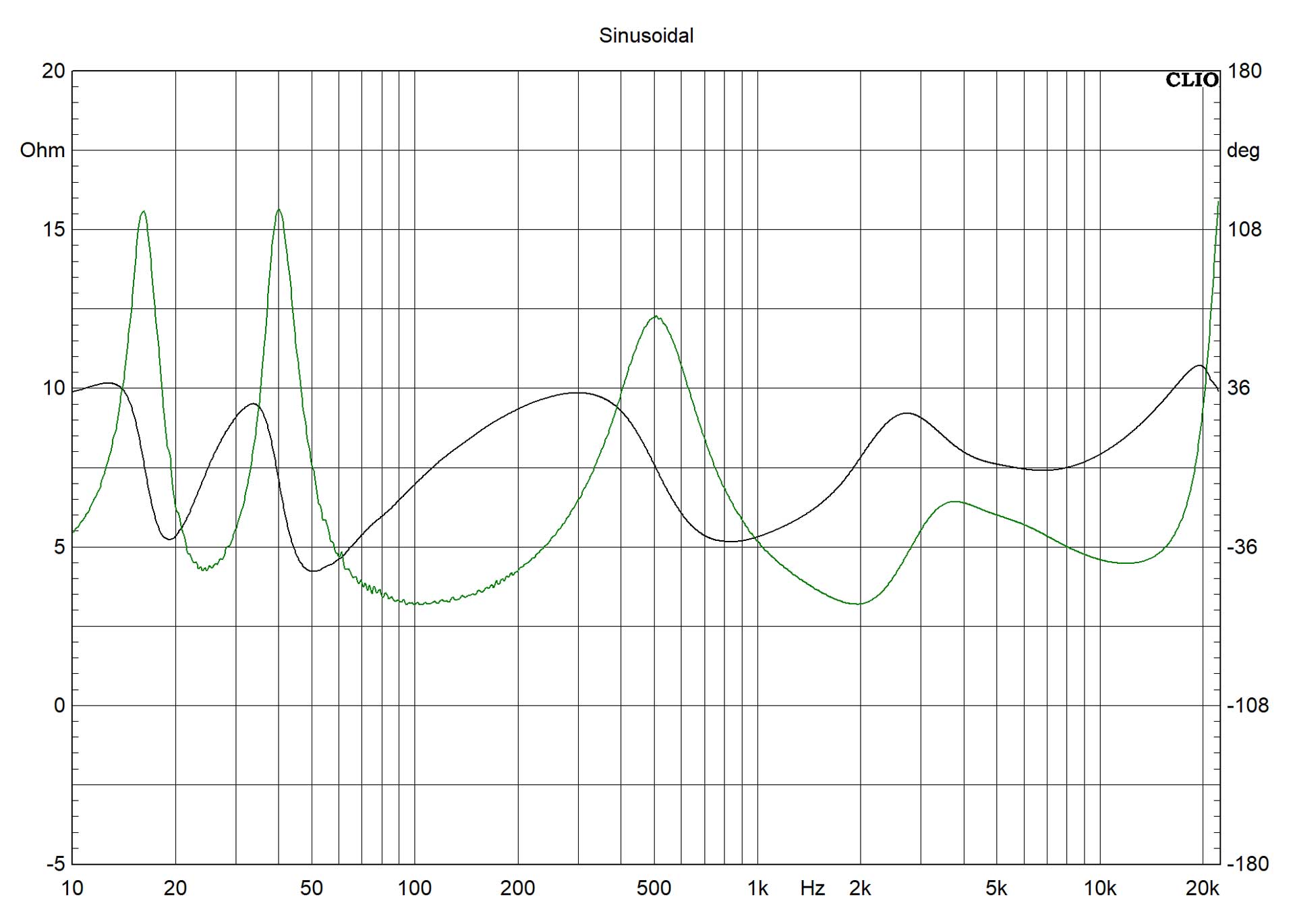
Lastly, I measured the VAF speakers’ impedance at their terminals, and above you can see a minimum impedance dip at 100Hz of approximately 3.2 ohms, with the entire impedance spectrum sitting within a 15-ohm window. The lack of extreme impedance shifts (expressed by the black phase response line which is largely confined to a plus or minus 36-degree window) presents a less reactive load to the amplifier, meaning the loudspeakers are relatively easy to drive. Over to music...
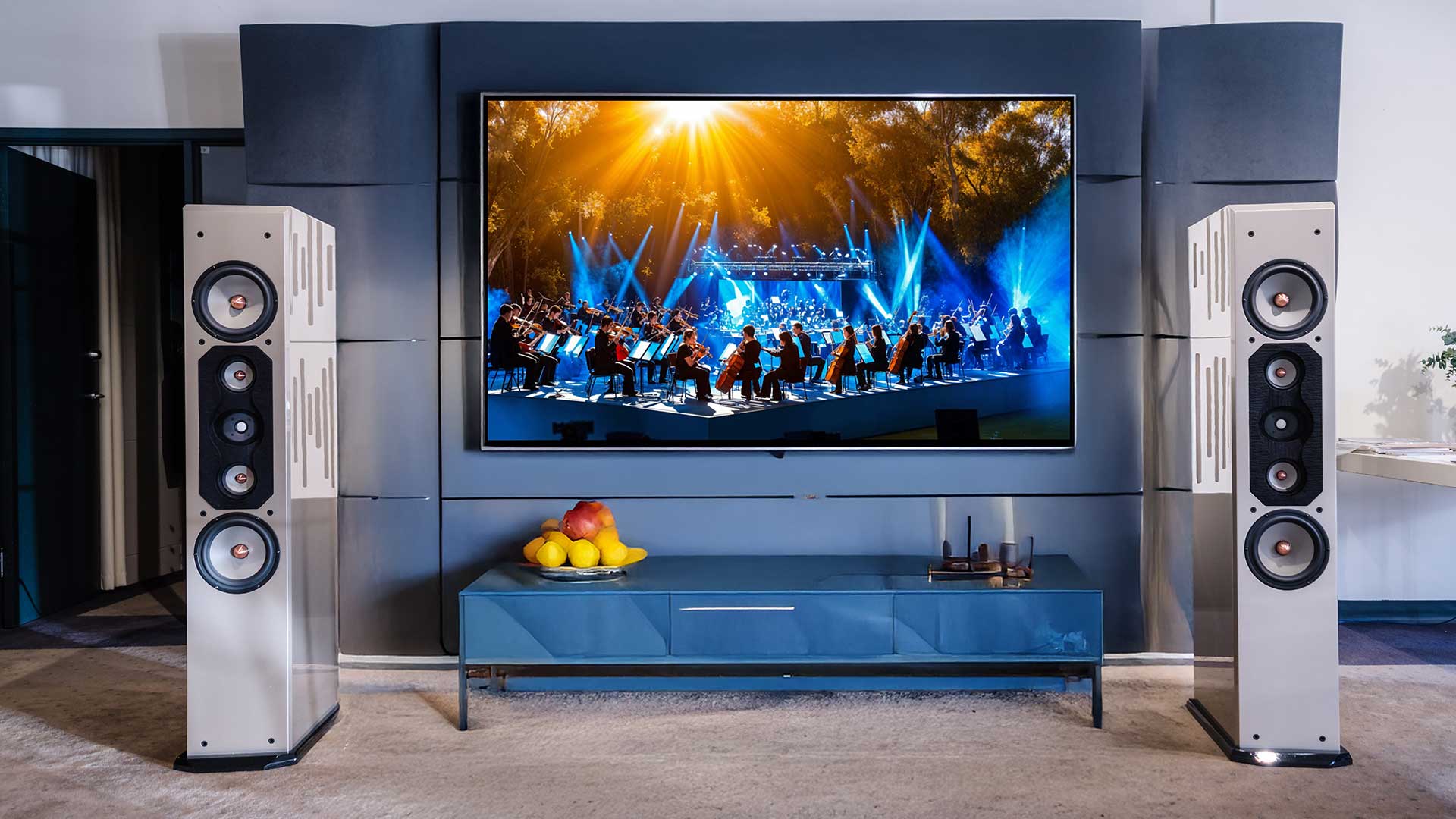
Listening sessions
Sarah McLachlan singing Blackbird at moderate volume was a treat of articulation. Soundstaging was accurate and extended well outside the span of the speakers’ positioning. With eyes closed and moving forward to the 2.5m distance (again, the point at which the drivers are ideally time-aligned), there was a slight but noticeable increase in transparency, the exact reasons for which may be multifold.
The bass was tight, very deep and, in some places, also sounded like it originated from outside the room. Overall, McLachlan was very present and natural. In two particular places within the track, she delivers with a subtle strain in her voice, and that wasn’t masked from view.
This led me to try Grace Jones’s Slave to the Rhythm, a classically challenging track with a tendency to be a little hot in some places. Bongos, bells and whistles were startling yet controlled, while the whole performance rang out with a live presence that made me regret never having attended a Grace Jones concert.
Verdict
Pricing for the built-to-order Signature i93 MKV starts at AU$21,999 (which is for a Black Oak pair and includes crates and shipping nationwide), which will put them out of reach for many people, but I believe these loudspeakers still represent good value for money compared to a lot of the competition at this end of the market.
They achieve what the designer set out to accomplish, faithfully reproducing recordings with utmost accuracy, devoid of colouration, within a deep and wide soundstage that nails stereo imaging.
Moreover, this has not been achieved by retraction: the i93 MKV offer an abundance of power, deep, clean and transient bass, and the ability to convincingly reproduce a live concert while appealing to even the most refined and classical hi-fi enthusiast. These loudspeakers are exciting to behold and a delight to listen to. Their ability to project such an impressive prestige while also discreetly integrating into an environment is a great step forward in getting large high-performance speakers into homes. Which brings me to say, finally, that you can actually arrange a 30-day home trial of the Signature i93 MKV before committing to such a significant expenditure, or simply demo them at VAF Research’s store in Kent Town, Adelaide. Reviewer: Martin Gosnell
Australian Hi-Fi is one of What Hi-Fi?’s sister titles from Down Under and Australia’s longest-running and most successful hi-fi magazines, having been in continuous publication since 1969. Now edited by What Hi-Fi?'s Becky Roberts, every issue is packed with authoritative reviews of hi-fi equipment ranging from portables to state-of-the-art audiophile systems (and everything in between), information on new product launches, and ‘how-to’ articles to help you get the best quality sound for your home.
Click here for more information about Australian Hi-Fi, including links to buy individual digital editions and details on how best to subscribe.
